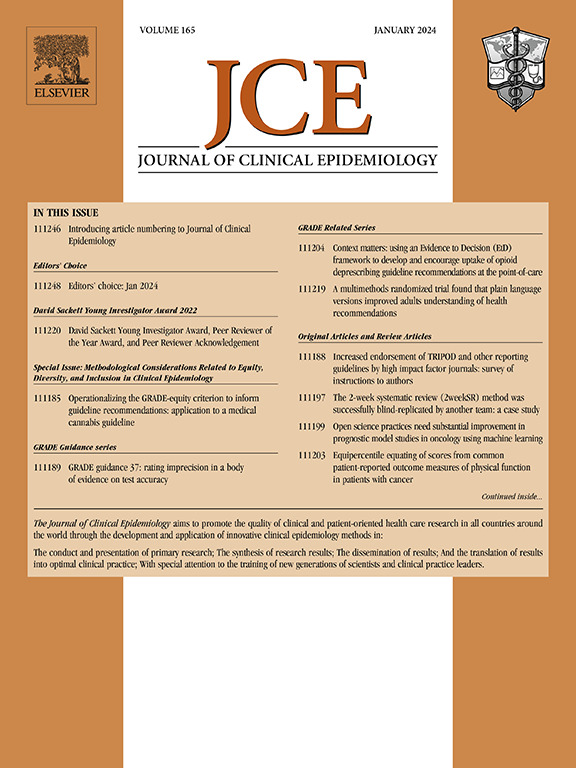Massive covidization and subsequent decovidization of the scientific literature involved 2 million authors
IF 7.3
2区 医学
Q1 HEALTH CARE SCIENCES & SERVICES
引用次数: 0
Abstract
Objectives
We aimed to examine the growth trajectory and impact of COVID-19-related papers in the scientific literature and how the scientific workforce engaged in this work.
Study Design and Setting
We used Scopus data to August 1, 2024, and a search string for COVID-19-related publications. Authors of COVID-19 work were mapped against databases of top-cited authors.
Results
Scopus indexed 718,660 COVID-19-related publications. As the proportion of all indexed scientific publications, COVID-19-related publications peaked in September 2021 (4.7%) remained at 4.3%–4.6% for another year and then gradually declined but was still 1.9% in July 2024. COVID-19-related publications included 1,978,612 unique authors: 1,127,215 authors had ≥5 full papers in their career and 53,418 authors were in the top 2% of their scientific subfield. Authors with >10%, >30%, and >50% of their total career citations attributed to COVID-19-related publications were 376,942, 201,702, and 125,523, respectively. As of August 1, 2024, 65 of the top 100 most cited papers published in 2020 were COVID-19-related, declining to 24/100, 19/100, 7/100, and 5/100 for the most cited papers published in 2021, 2022, 2023, and 2024, respectively. Across 174 scientific subfields, 132 had ≥10% of their active influential (top 2% by composite citation indicator) authors publish something on COVID-19 during 2020–2024. Among the 300 authors with highest composite citation indicator specifically for their COVID-19-related publications, 41 were editors or journalists or columnists.
Conclusion
COVID-19 massively engaged the scientific workforce in unprecedented ways. As the pandemic ended, there has been a sharp decline in the overall volume and high impact of newly published COVID-19-related publications.
Plain Language Summary
We evaluated Scopus, a bibliometric database, for the increase and waning of the COVID-19 scientific literature. Until August 1, 2024, we identified 718,660 COVID-19-related publications indexed in Scopus that had involved 1,978,612 unique authors. The rise and subsequent decline pattern of COVID-19 publications was similar to other previous epidemics like Zika, Ebola, and H1N1, but at a far larger, unprecedented scale. 125,523 authors had >50% of their total career citations attributed to COVID-19 papers. 132/174 scientific subfields had at least one of every 10 of their top-cited authors publish something on COVID-19 during 2020–2024. Many influential authors were editors or journalists or columnists. Overall, COVID-19 massively engaged a huge number of authors and created a vast literature. As the interest has now sharply declined, one needs to examine what this immense COVID-19 scientific workforce will do in the future.
求助全文
约1分钟内获得全文
求助全文
来源期刊

Journal of Clinical Epidemiology
医学-公共卫生、环境卫生与职业卫生
CiteScore
12.00
自引率
6.90%
发文量
320
审稿时长
44 days
期刊介绍:
The Journal of Clinical Epidemiology strives to enhance the quality of clinical and patient-oriented healthcare research by advancing and applying innovative methods in conducting, presenting, synthesizing, disseminating, and translating research results into optimal clinical practice. Special emphasis is placed on training new generations of scientists and clinical practice leaders.
 求助内容:
求助内容: 应助结果提醒方式:
应助结果提醒方式:


